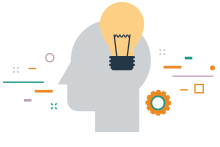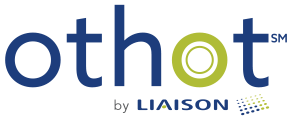For CFO’s: The Power of Artificial Intelligence Drives Better Decisions and Higher ROI

Kelley Lynch
I have been a Chief Financial Officer (with some additional titles) for the better part of 20 years – different industries, different size companies, some domestic and others international – and all have been at high-growth companies. I am more of an operations-focused CFO. Hands down my favorite part of my jobs has been working with managers and making sure that the finance, accounting, HR, and IT groups are valuable team members to each part of our organization.
Even though I have worked with high-growth companies, I have had to weather some pretty big storms, – the 2008 financial crisis, customers declaring bankruptcies, staff layoffs, complying with all the “new” financial reporting rules, etc. However, what we are going through now with the COVID-19 pandemic and financial crisis is new for each of us. So many unknowns, so many repercussions, and health and safety issues on top of the financial issues.
Each organization, large or small, for-profit or nonprofit, are examining what they need to do right now to get through this crisis, while also keeping an eye on the future. Many of us are also asking what we can do differently to help our organization be stronger and nimbler.
In actuality, this might be a good time to consider opportunities and investments to not only help you reach your short-term goals but also to help with long-term scalability and improved ROI.
Is it time to consider Artificial Intelligence?
As a CFO, you rely on data, as well as your experience, to make decisions every day. You know that you must ‘prove’ your proposals and provide the appropriate backup and analysis for the Board of Trustees to approve a new initiative or a budget. And with data, you are also able to track goals and metrics for departments across the university.
Are all departments in your institution taking advantage of data analytics? Especially the groups who have a seemingly infinite amount of data? I use Excel because it can give me the flexibility of modeling and forecasting many different financial and cash scenarios; but Excel, like my brain, has a limited ability with the number of scenarios and variables it can process quickly.
So, what solutions are your admission officers using to process the hundreds of variables that relate to your “thousands” of applicants as they are choosing the school they will attend? The beauty of artificial intelligence is that it can process, in seconds, thousands and thousands of scenarios and provide both predictive and prescriptive analytics to your admission officers. Then the admissions team can use this information and their own expertise to make better decisions for each unique applicant. Thus, decision making is both art and science.
Othot has shown that an institution can make better decisions by providing our partner institutions with reports and information at the individual student level. Those decisions that will not only help improve the quality of the overall admitted class but also increase net tuition revenue.
Decision making is both art and science – with art being intuition and experience. However, we have never gone through a crisis like COVID-19. We can learn from past crises (e.g., 2008 financial crisis); but the health element to COVID-19 adds a new twist. So, unfortunately, we won’t be able to rely on our intuition as much this time.
Build vs. Buy, That is the Question
Most Provosts and CFOs see the value that artificial intelligence can bring to their institution, but often they ask the question, ‘Should we buy a solution or could we build our own?’. After all, universities employ many intelligent people.
At a prior company, I had that same question and evaluated the costs to move or buy into new geographic markets (mostly international). In the end, the total cost would have been the same whether we bought a company with experience or we ‘hung a shingle’ and developed our market presence. But the return and timing of the return were very different. If we bought a company in the geographic region, we had to spend more money upfront versus spending funds over a few years as we developed the market. BUT we started earning revenue on day one in the regions where we bought a local company!
Developing your own machine learning models is probably feasible over time at your institution. We have been working on these models for more than five years and we continue to learn how to perfect them. So, you need to consider how you want to or can allocate resources and how fast you would like to see results.
Collaborating on the implementation of artificial intelligence initiatives with your admission and retention groups would be a great opportunity for finance to participate in a cross-functional team that can have a significant impact on both improving revenues and lowering costs over time while meeting your admissions and retention goals.
The Power of Partnerships
Othot would be thrilled to be a partner in your AI endeavors. You and your operational teams have the expertise and knowledge of your institution’s goals and missions. You know what makes the student experience unique at your school and what makes your students successful post-graduation.
We’ll bring the AI.

Kelley Lynch




